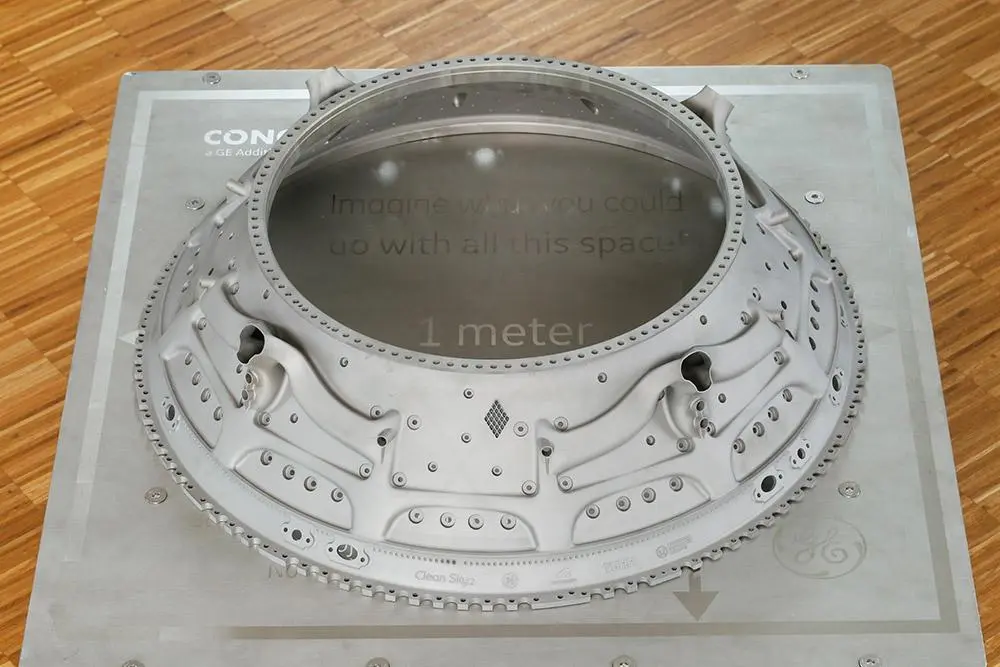& Construction

Integrated BIM tools, including Revit, AutoCAD, and Civil 3D
& Manufacturing

Professional CAD/CAM tools built on Inventor and AutoCAD
2 min read
See how a joint effort between top aviation companies and universities yielded a metal 3D-printed turbine center designed with generative design in Fusion 360.

Last summer, Kylie Jenner’s 17-minute private jet trip sparked social media outrage. Private jets and fuel waste are increasingly under scrutiny from the public at large. A recent report from Yard provided a who’s-who of celebrity Private jet carbon footprints — from Taylor Swift to Blake Shelton, Oprah, Steven Spielberg, and Jay-Z.
Private jets are just one component of a huge carbon emissions challenge with the aviation industry. We’re all part of it every time we travel. Celebrities—they’re just like us. (Well, sort of…)
Global travel and shipping have reached new heights. According to the Environmental and Energy Study Institute (EESI), commercial aviation alone produces approximately 2.4% of global carbon emissions. To put that in perspective, this number ranks the industry in between the entire emissions of Germany and Japan.
Finding a solution is paramount, and the European Union’s Clean Aviation Joint Undertaking is taking action. It has issued approximately €4 billion in grants to research projects aimed at increasing aircraft fuel efficiency. The goal is to reduce net greenhouse gas emissions by at least 30% by 2030.
One part of Clean Aviation’s research effort is MOnACO (short for “manufacturing of a large-scale additive manufacturing component”), with participants including GE Aerospace’s Advanced Technology team in Munich, the Dresden University of Technology, Hamburg University of Technology, and the Autodesk UK team. Their goal? Reimagine the design, optimization, and validation of a large-scale aircraft engine’s turbine center frame and use additive manufacturing. And the hard part? The turbine center frame consists of 100 parts.
“What we ultimately set out to do was merge those parts into one,” says Andy Harris, a senior principal research engineer at Autodesk Research in London, in a recent Redshift article. “Streamlining the turbine center frame makes the component easier to manufacture and, most important, lighter. By reducing the weight of the turbine center frame, you use less fuel and therefore produce fewer carbon emissions. Also, using less fuel makes the aircraft cheaper to operate. So there’s an economic benefit as well as an environmental benefit.”
After defining design parameters and performance requirements in Fusion 360, MOnACO used generative design to evaluate and explore the options. The team rigorously tested structural, fluid, and manufacturing simulations for ideal parts. This was followed by prototyping to understand the behavior and inform the next iterations to improve stiffness, mass reduction, and pressure drop. Autodesk Volumetric Kernel for aerothermal management was a key component for the final iteration. The team also turned to additive manufacturing to find even further efficiencies in the manufacturing process.
With the final design, a full-scale prototype was manufactured in a GE additive manufacturing facility, with additional post-processing completed at an Autodesk facility for verification. The results were eye-popping mass savings of more than 30%.
While this is just the very beginning, it’s one step toward helping bring a new level of fuel and carbon emission savings to the aviation industry.
Learn more about Clean Aviation and MOnACO here.

By clicking subscribe, I agree to receive the Fusion newsletter and acknowledge the Autodesk Privacy Statement.
Success!
May we collect and use your data?
Learn more about the Third Party Services we use and our Privacy Statement.May we collect and use your data to tailor your experience?
Explore the benefits of a customized experience by managing your privacy settings for this site or visit our Privacy Statement to learn more about your options.